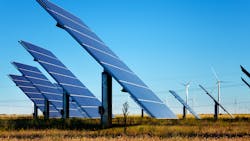New Report Highlights Benefits and Challenges of Clean Energy Microgrids for States
The National Association of Regulatory Utility Commissioners and the National Association of State Energy Officials have published a report titled “Clean Energy Microgrids: Considerations for State Energy Offices and Public Utility Commissions to Increase Resilience, Reduce Emissions, and Improve Affordability.” This report explores the potential advantages of clean energy microgrids for states.
Clean energy microgrids offer diverse benefits and services to critical infrastructure, disadvantaged communities, higher learning institutions, and other electricity consumers. These benefits include decarbonization, enhanced resilience, cost savings, and improved grid efficiency. State Energy Offices and public utility commissions play a crucial role in supporting and implementing various regulatory, programmatic, and policy actions to promote the development and deployment of clean energy microgrids. They also address affordability, cost, and technological challenges associated with microgrids.
Despite existing gaps in information, research, investment, policies, and regulations that hinder the implementation of clean energy microgrids, resources like this publication, facilitated through the NASEO-NARUC Microgrids State Working Group, help bridge these gaps. By doing so, microgrids can provide benefits to the public.
Over the past decade, State Energy Offices have partnered with energy providers, local governments, and utilities to develop microgrid roadmaps and facilitate microgrid installations that enhance resilience and reduce emissions,” said NASEO President David Terry. “The NASEO-NARUC Clean Energy Microgrids guide offers states actionable policy and regulatory considerations to facilitate construction of clean energy microgrids by local governments, state institutions, mission-critical facilities and businesses.”
In addition to outlining the advantages and obstacles related to clean energy microgrids, the report discusses economic and cost considerations for their development. It explores the essential technological components of a clean energy microgrid and highlights current and future clean technologies that are becoming more cost-effective and competitive. Lastly, the report concludes by offering policy and regulatory considerations for State Energy Offices and public utility commissions, aiming to assist in the deployment of clean energy microgrids.
